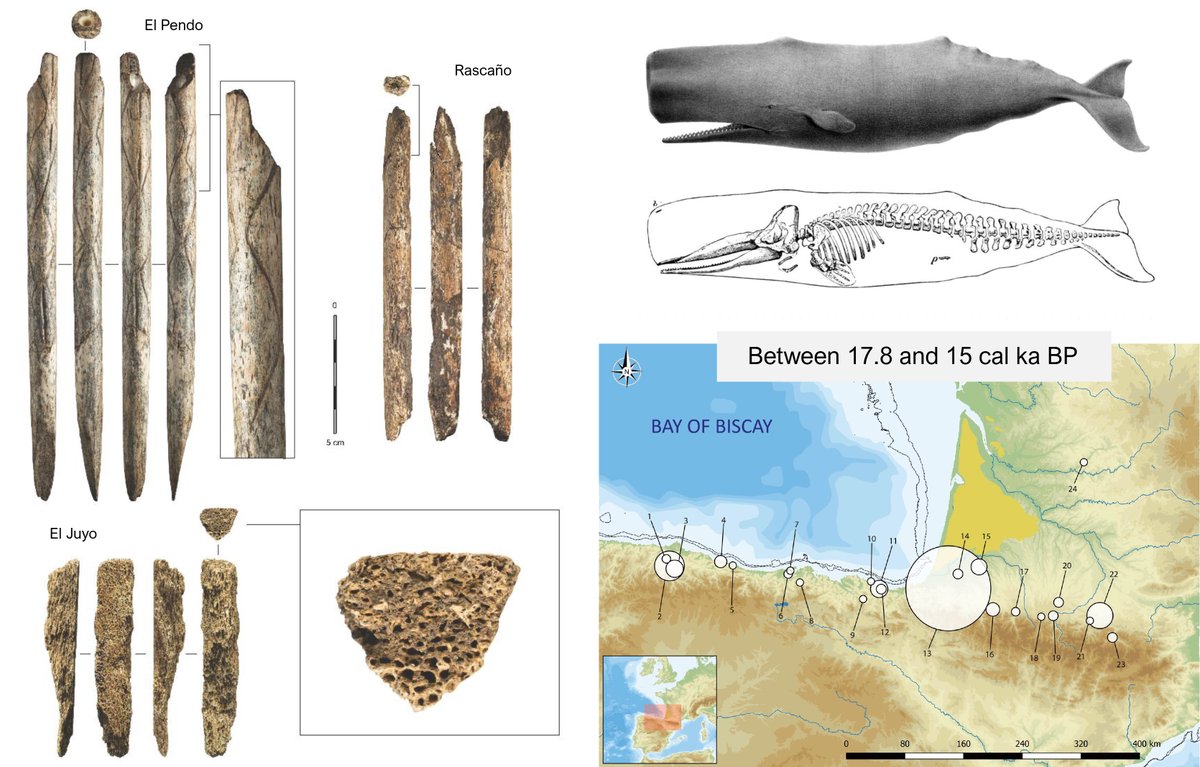
🗞️New paper!
" Interconnected Magdalenian societies as revealed by the circulation of whale bone artefacts in the Pyreneo-Cantabrian region” published in Quaternary Science Reviews 🐳
Let’s open a thread! 👇
#Archaeology #prehistory #palaeolithic #magdalenian
#FossilFriday
" Interconnected Magdalenian societies as revealed by the circulation of whale bone artefacts in the Pyreneo-Cantabrian region” published in Quaternary Science Reviews 🐳
Let’s open a thread! 👇
#Archaeology #prehistory #palaeolithic #magdalenian
#FossilFriday

Around the Bay of Biscay, interactions between humans and whales are part of a multi-millennial (pre)history.
Until now, the early use of whale bone as a raw material was mainly documented in the #Magdalenian Pyrenean collections. What about the neighbouring Cantabrian region?
Until now, the early use of whale bone as a raw material was mainly documented in the #Magdalenian Pyrenean collections. What about the neighbouring Cantabrian region?

54 whale bone artefacts (essentially large finished weapons) were identified from 12 of the 64 sampled Cantabrian sites. @MuseosCant @gordailua @arkeologimuseoa @museodealtamira @MANArqueologico @MNCNcomunica 

The #whale bone objects are primarily associated with the middle phase of the Cantabrian Magdalenian, and overlap slightly with the beginning its upper and probably the end of its lower phases (17.8 - 15.5 cal ka BP). 

The concentration of whale bone objects at a limited number of #Cantabrian sites would be in line with the existence of receptor sites - where finished objects where imported - incorporated within a network(s) connecting multiple valleys and extending into the #Pyrenees. 

The circulation of these objects evidence regular, structured, long-distance communication networks operating on both sides of the current #basquecountry , suggesting social and/or economic interactions between Pyreneo-Cantabrian foragers. 

These artefacts constitute the earliest known evidences of an exploitation of whale bone for technical needs in Iberia. This discovery reinforces the Bay of Biscay being the backdrop to the emergence of the first regular, diversified and organized coastal economies. 

This research was carried-out by French and Spanish investigators (@unican @usal @uniovi_info @aranzadi) and was leaded by a collaboration between @umr5608_traces and @EvoAdapta labs 👩🔬
▶️Download link: sciencedirect.com/science/articl…
▶️Download link: sciencedirect.com/science/articl…
This research was led by Alexandre Lefebvre during his postdoc in collab with Ana B. Marín-Arroyo, was funded by a #FyssenFoundation grant (The #CetOs Project based at the UC-#IIIPC, #Fyssen) and the ANR project PaleoCet (ANR-18-CE27-0018 @AgenceRecherche) @umr5608_traces
🦴🐳
🦴🐳
• • •
Missing some Tweet in this thread? You can try to
force a refresh


